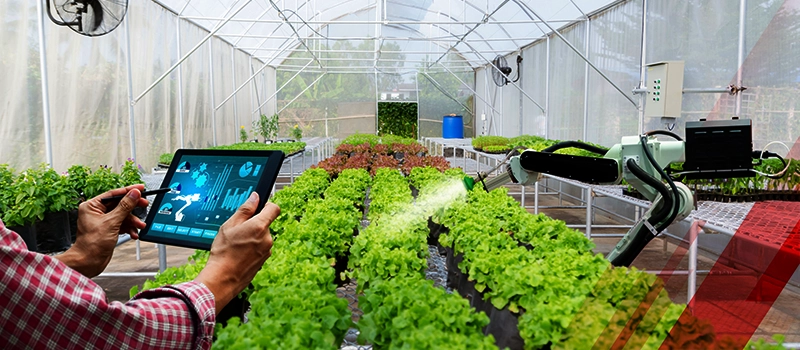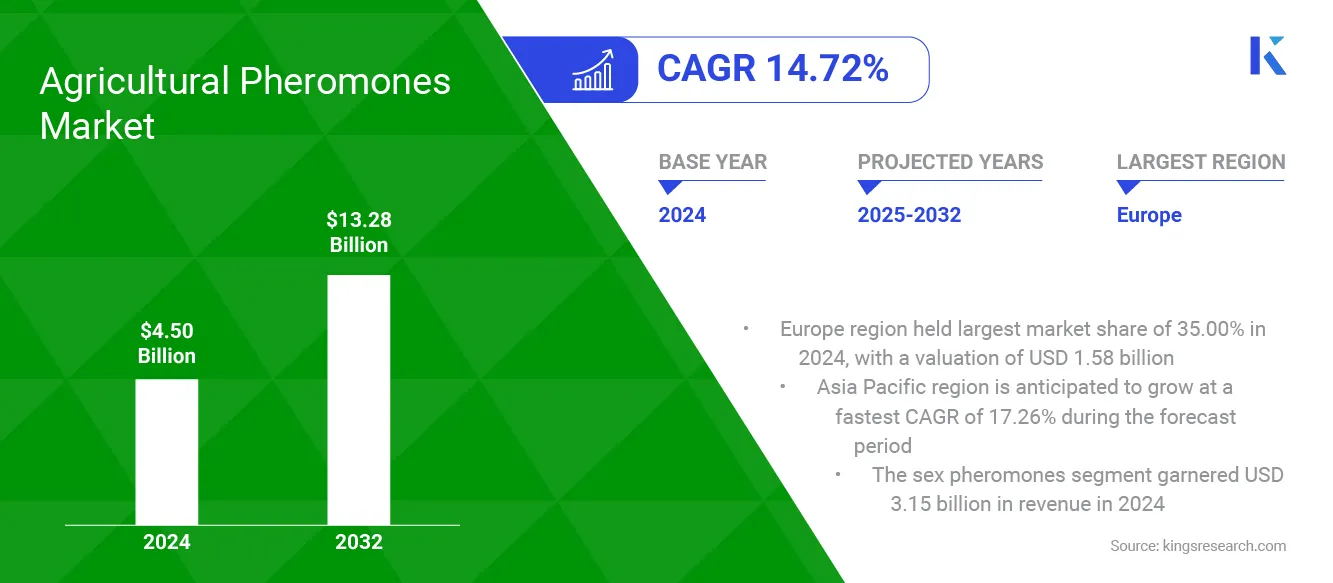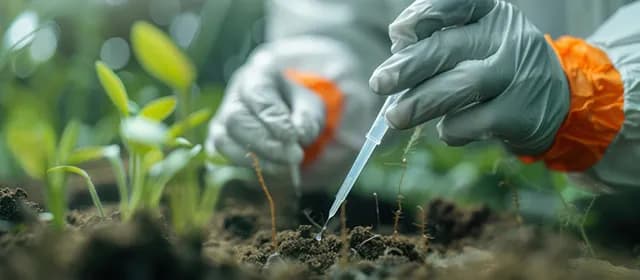9 billion by 2050! That’s the estimate by WHO and World Bank in its article on Climate Smart Agriculture recently mentioned that to feed so many people, the production will need to go up by 70%.
How to generate enough food to feed the world's population is an issue on many people's minds because the worldwide need for calories is predicted to increase by approximately 70% over the next 20 years. Hence, farmers need to develop ways to increase production on existing farmland while using fewer resources. Some farms are beginning to do just that through precision agriculture.
What Is Precision Agriculture?
Using cutting-edge tools like field mapping or satellite images, precision farming can increase crop quality and profitability. Also, it makes the best use of conventional resources. Hence, by enabling it to address both the growing economic and ecological concerns, this agricultural management system aids in the development of sustainable agriculture.
GPS, drones, and satellite photos are just a few of the technology incorporated into such a system. Farmers receive information on all important topics, such as crop status, weather forecasts, environmental changes, etc., based on this data. Also, the capacity to manage fields by splitting them into various zones rather than managing them as a continuous block is another significant distinction between precision farming and traditional agriculture. Such zoning enables varied management choices for certain field components, such as modifying the amount of fertilizer, maximizing method movement, and using fuel more sparingly.
The earliest GPS (global positioning system) satellites were launched in the 1950s and 1960s, which is when precision agriculture first became popular.
The widespread adoption of precision agriculture technologies by farmers didn't start until the 1980s and 1990s, though. The availability of satellite images and other types of remote sensing data, as well as the development of more accessible and affordable GPS receivers and mapping software, were all factors in this.
Since then, developments in data management and analysis tools, as well as the advent of new technology like sensors, drones, and autonomous vehicles, have allowed the area of precision agriculture to develop and grow. Farmers all across the world are using precision agriculture today to increase their operations' production, efficiency, and sustainability.
Precision Agriculture Technologies And Methods
Specialized tools and software are needed for precision farming in order to gather and process all the data. As hardware and software are used in precision agriculture technology, experts are required to apply them. But, farmers may manage on their own with more effort. The three types of precision farming technologies are ground, aerial, and satellite.
Global Positioning System (GPS)
In all weather conditions, anywhere on or near the Earth, the Global Positioning System (GPS) is a satellite-based navigation system that delivers location and timing information. GPS is utilized in precision agriculture to give accurate location data for mapping and navigational needs.
Using GPS for mapping and data collecting at the field level is one of the key applications for precision agriculture. Farmers can gather information on the location, size, shape, and location of their fields as well as the location of specific objects within the fields such as irrigation systems, drainage ditches, and fence lines using GPS receivers attached to their vehicles or equipment. With the use of this information, detailed maps of the fields may be produced, which can then be used to plan and schedule fieldwork, implement variable rate technologies for the control of agricultural inputs, and assess field performance.
Geographic Information System (GIS)
A geographical information system (GIS) is a computerized database system that is used to input, save, retrieve, analyze, and display referenced geographic data in a map-like fashion.
To create, store, and analyze geographical data on farming activities, such as field boundaries, topography, soil types, crop varieties, and other factors, precision agriculture uses geographic information systems (GIS). Farmers can use GIS to pinpoint the best spots to plant particular crops or to pinpoint regions that are most susceptible to pests or disease.
Variable-Rate Technology (VRT)
The term "variable-rate technology" (VRT) refers to agricultural field equipment that has the ability to accurately vary the rate of application of crop inputs such as irrigation, fertilizer, tillage, and pest control.
The foundation of VRT is the notion that different areas of a field could have various crop qualities, soil types, topographies, and other elements that could influence their input requirements. Farmers may maximize their resource utilization, increase productivity, and enhance efficiency by employing VRT.
Yield Monitors
In precision agriculture, a yield monitor is a tool that measures and logs crop yields as they are harvested. As grain or other crops travel through the combine harvester, sensors measure the flow of those crops. A computer or other data recording device then stores the yield data.
By displaying the spatial variability of crop yields and highlighting regions that are performing well or poorly, yield monitors can be used to build precise maps of crop yields across a field.
Proximate Sensors
As the tractor moves over the field, proximate sensors can be utilized to measure the soil's (N and pH) and crops' parameters.
In precision agriculture, proximate sensors are used to measure the characteristics of crops or soil that are nearby the sensor. A reading is collected after the soil sample has been scooped and pushed against an electrode for a stabilization time of roughly 10-15 seconds. These sensors can be mounted on cars or other agricultural machinery or used as handheld devices. Farmers can adapt to changing conditions and make necessary adjustments thanks to the use of proximate sensors, which often collect data in real-time or very close to real-time.
Precision Agriculture and Sustainability
The objective of sustainable agriculture is to provide society's current requirements, particularly for food, without putting the environment at risk. The use of precision agriculture enables farmers to cultivate crops and soil as effectively as possible while conserving resources.
For instance, VRT lessens the reliance of production on chemicals, which increases the field's long-term output. Reduced emissions of dangerous substances into the atmosphere result from transportation cost optimization.
Hence, the most cutting-edge agricultural method that enables solving both productive and socially relevant, including global, challenges is precision sustainable agriculture.
The adoption of precision and digital farming technologies, which help to maximize agri-input resources without increasing costs or workload, benefits both large and small farmers as well as organizations working with growers. Precision agriculture is here to stay because of how drastically climate change is affecting farming, how frequently unforeseen natural disasters like floods and droughts occur, and how unabatedly the world's population is expanding.
The information gathered through precision agriculture can be utilized to better manage all operations on the farm and raise productivity.




